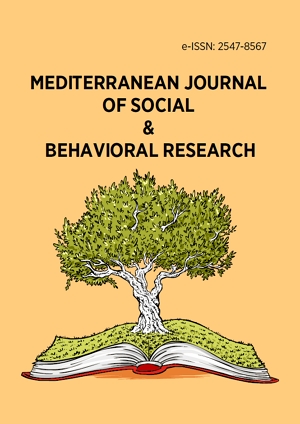Research Article
Effects of e-learning on master EFL students’ academic achievement: A case study
More Detail
1 Faculty of Letters, Foreign Languages and Social Sciences, University of Ain-Temouchent, ALGERIA* Corresponding Author
Mediterranean Journal of Social & Behavioral Research, 8(2), June 2024, 37-42, https://doi.org/10.30935/mjosbr/14412
Submitted: 16 July 2023, Published Online: 26 March 2024, Published: 01 May 2024
OPEN ACCESS 2514 Views 1638 Downloads
ABSTRACT
The rationale of the present paper is to investigate the effectiveness of e-learning anent the students' academic achievement in English a a foreign language. A case study has been conducted at the Department of Letters and English Language by taking into consideration the students from two different Master sections at Ain-Temouchent university namely, 'Didactics and Applied Linguistics' and 'Literature and Civilization'. Through the use of an online questionnaire, the results revealed that the majority of the respondents under investigation approve the idea that e-learning has a positive impact on the academic performance and success of the learners, and that e-learning can be a complementary aspect to classroom learning for the best possible outcomes as regards academic achievement.
CITATION (APA)
Hamzaoui, C. (2024). Effects of e-learning on master EFL students’ academic achievement: A case study. Mediterranean Journal of Social & Behavioral Research, 8(2), 37-42. https://doi.org/10.30935/mjosbr/14412
REFERENCES
- Abdel, J. Y., & Shalash, B. (2020). The impact of e-learning strategy on students’ academic achievement case study: Al-Quds Open University. International Journal of Higher Education, 9(6), 44-53. https://doi.org/10.5430/ijhe.v9n6p44
- Aldrich, C. (2004). Simulations and the future of learning: An innovative (and perhaps revolutionary) approach to e-learning. John Wiley & Sons, Inc.
- Bass, H. (2006). E-learning mathematics London [Panel presentation]. The Instructional Potential of Digital Technologies.
- Bonham, L. A. (1992). Candy, Philip C. (1991). Self-direction for lifelong learning. Jossey-Bass. Adult Education Quarterly, 42(3), 192-193. https://doi.org/10.1177/074171369204200307
- Cardak, C., & Selvi, K. (2016). Increasing teacher candidates’ ways of interaction and levels of learning through action research in a blended course. Computers in Human Behavior, 61, 488-506. http://doi.org/10.1016/j.chb.2016.03.055
- Costa, C., Alvelos, H., & Teixeira, L. (2012). The use of Moodle e-learning platform: A study in a Portuguese university. Procedia Technology, 5, 334-343. https://doi.org/10.1016/j.protcy.2012.09.037
- Guemide, B., & Benachaiba, C. (2012). Exploiting ICT and e-learning in teacher’s professional development in Algeria: The case of English secondary school teachers. Turkish Online Journal of Distance Education, 13(3), 33-49. https://files.eric.ed.gov/fulltext/EJ997805.pdf
- Sangrà, A., Vlachopoulos, D., & Cabrera, N. (2012). Building an inclusive definition of e-Learning: An approach to the conceptual framework. International Review of Research in Open Distance Learning, 13(2), 145-15. https://doi.org/10.19173/irrodl.v13i2.1161
- Wagner, N., Hassanein, K., & Head, M. (2008). Who is responsible for e-learning in higher education? A stakeholders’ analysis. Educational Technology& Society, 11(3), 26-36. https://www.researchgate.net/publication/220374509
- WHO. (2019). World health statistics overview 2019: Monitoring health for the SDGs, sustainable development goals. World Health Organization. https://apps.who.int/iris/handle/10665/311696

 The articles published in this journal are licensed under the CC-BY Creative Commons Attribution International License.
The articles published in this journal are licensed under the CC-BY Creative Commons Attribution International License.